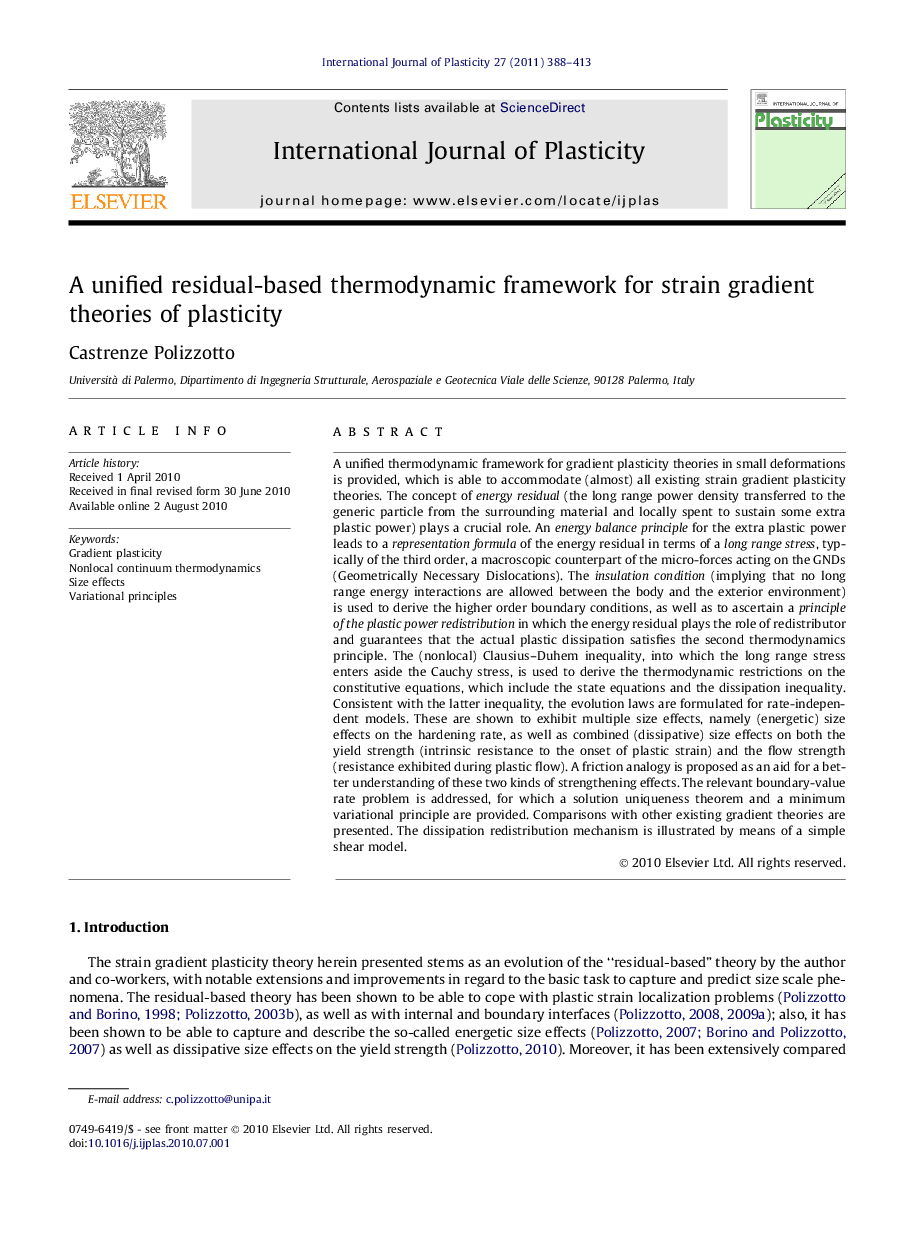| کد مقاله | کد نشریه | سال انتشار | مقاله انگلیسی | نسخه تمام متن |
|---|---|---|---|---|
| 786315 | 1465653 | 2011 | 26 صفحه PDF | دانلود رایگان |

A unified thermodynamic framework for gradient plasticity theories in small deformations is provided, which is able to accommodate (almost) all existing strain gradient plasticity theories. The concept of energy residual (the long range power density transferred to the generic particle from the surrounding material and locally spent to sustain some extra plastic power) plays a crucial role. An energy balance principle for the extra plastic power leads to a representation formula of the energy residual in terms of a long range stress, typically of the third order, a macroscopic counterpart of the micro-forces acting on the GNDs (Geometrically Necessary Dislocations). The insulation condition (implying that no long range energy interactions are allowed between the body and the exterior environment) is used to derive the higher order boundary conditions, as well as to ascertain a principle of the plastic power redistribution in which the energy residual plays the role of redistributor and guarantees that the actual plastic dissipation satisfies the second thermodynamics principle. The (nonlocal) Clausius–Duhem inequality, into which the long range stress enters aside the Cauchy stress, is used to derive the thermodynamic restrictions on the constitutive equations, which include the state equations and the dissipation inequality. Consistent with the latter inequality, the evolution laws are formulated for rate-independent models. These are shown to exhibit multiple size effects, namely (energetic) size effects on the hardening rate, as well as combined (dissipative) size effects on both the yield strength (intrinsic resistance to the onset of plastic strain) and the flow strength (resistance exhibited during plastic flow). A friction analogy is proposed as an aid for a better understanding of these two kinds of strengthening effects. The relevant boundary-value rate problem is addressed, for which a solution uniqueness theorem and a minimum variational principle are provided. Comparisons with other existing gradient theories are presented. The dissipation redistribution mechanism is illustrated by means of a simple shear model.
Journal: International Journal of Plasticity - Volume 27, Issue 3, March 2011, Pages 388–413